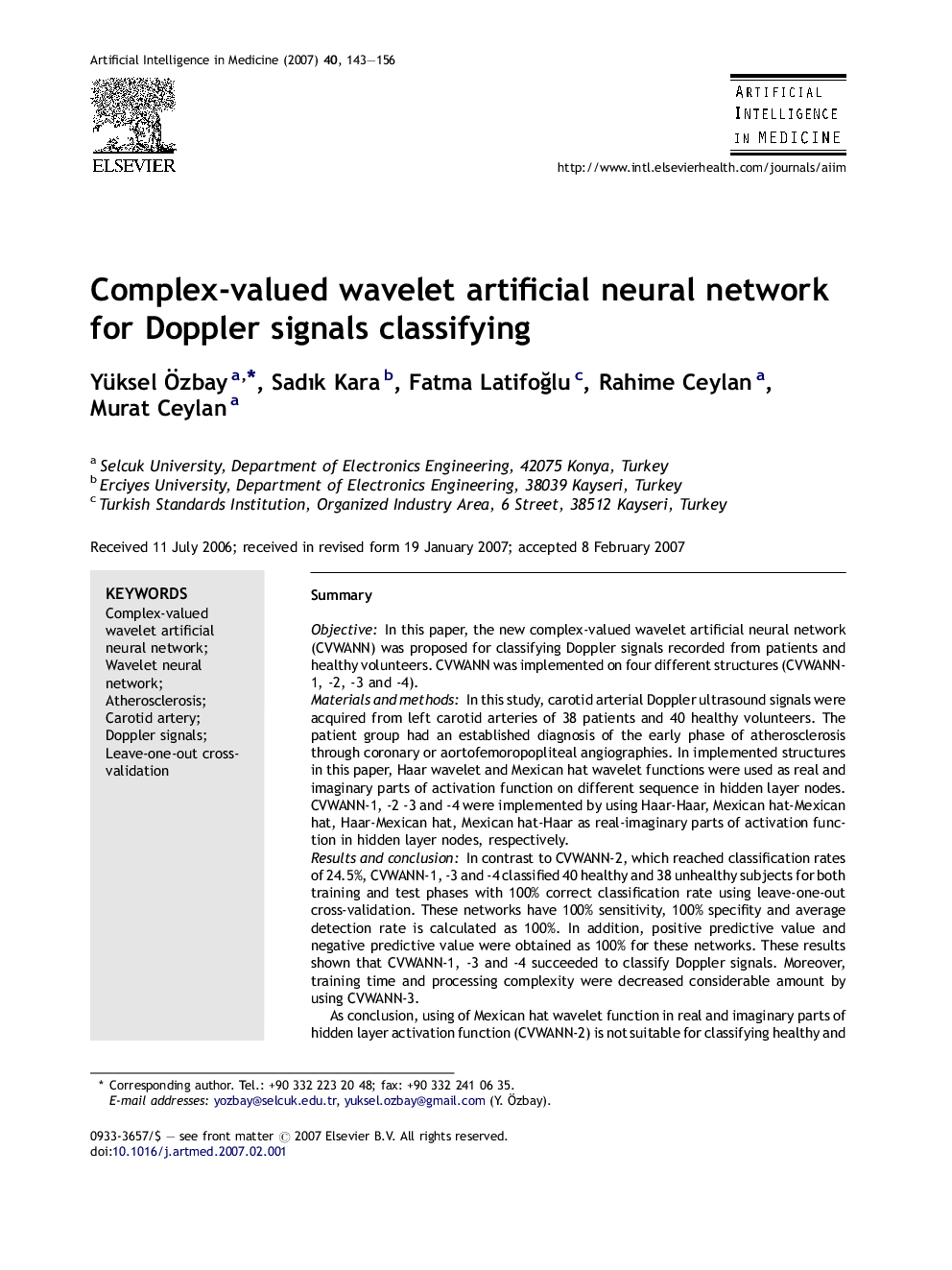| Article ID | Journal | Published Year | Pages | File Type |
|---|---|---|---|---|
| 378052 | Artificial Intelligence in Medicine | 2007 | 14 Pages |
SummaryObjectiveIn this paper, the new complex-valued wavelet artificial neural network (CVWANN) was proposed for classifying Doppler signals recorded from patients and healthy volunteers. CVWANN was implemented on four different structures (CVWANN-1, -2, -3 and -4).Materials and methodsIn this study, carotid arterial Doppler ultrasound signals were acquired from left carotid arteries of 38 patients and 40 healthy volunteers. The patient group had an established diagnosis of the early phase of atherosclerosis through coronary or aortofemoropopliteal angiographies. In implemented structures in this paper, Haar wavelet and Mexican hat wavelet functions were used as real and imaginary parts of activation function on different sequence in hidden layer nodes. CVWANN-1, -2 -3 and -4 were implemented by using Haar-Haar, Mexican hat-Mexican hat, Haar-Mexican hat, Mexican hat-Haar as real-imaginary parts of activation function in hidden layer nodes, respectively.Results and conclusionIn contrast to CVWANN-2, which reached classification rates of 24.5%, CVWANN-1, -3 and -4 classified 40 healthy and 38 unhealthy subjects for both training and test phases with 100% correct classification rate using leave-one-out cross-validation. These networks have 100% sensitivity, 100% specifity and average detection rate is calculated as 100%. In addition, positive predictive value and negative predictive value were obtained as 100% for these networks. These results shown that CVWANN-1, -3 and -4 succeeded to classify Doppler signals. Moreover, training time and processing complexity were decreased considerable amount by using CVWANN-3.As conclusion, using of Mexican hat wavelet function in real and imaginary parts of hidden layer activation function (CVWANN-2) is not suitable for classifying healthy and unhealthy subjects with high accuracy rate. The cause of unsuitability (obtaining the poor results in CVWANN-2) is lack of harmony between type of activation function in hidden layer and type of input signals in neural network.
